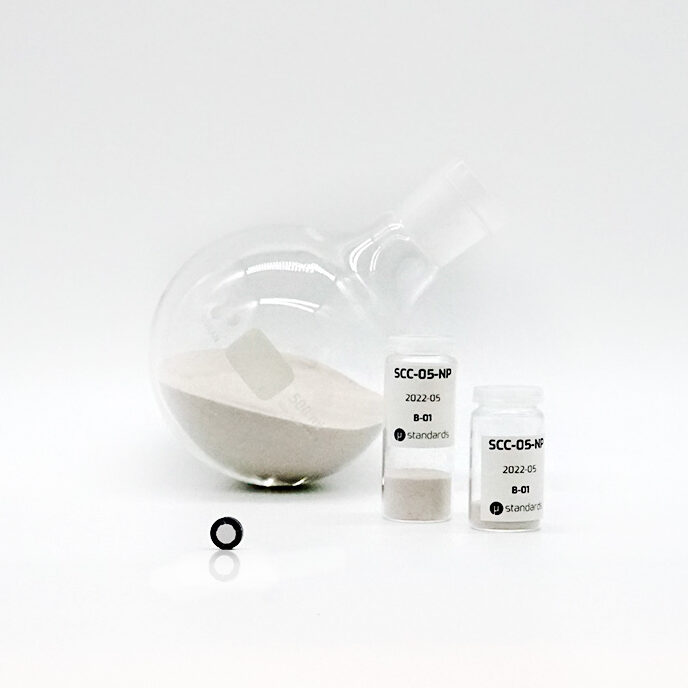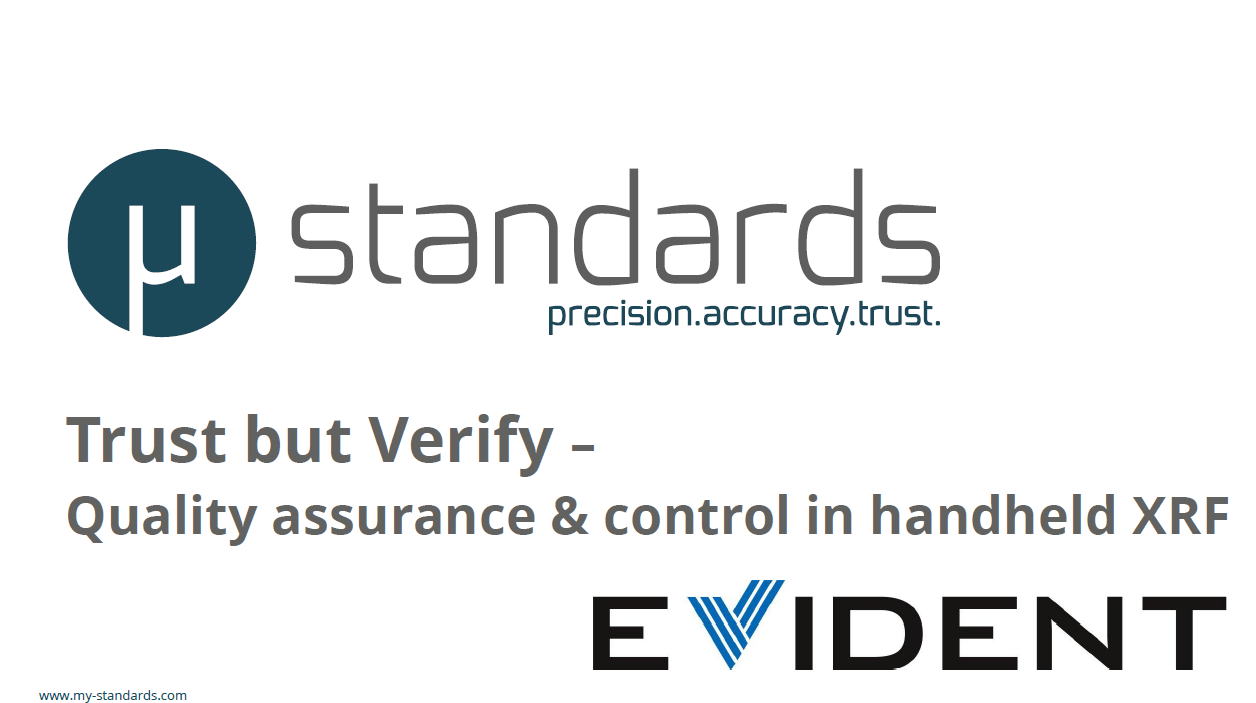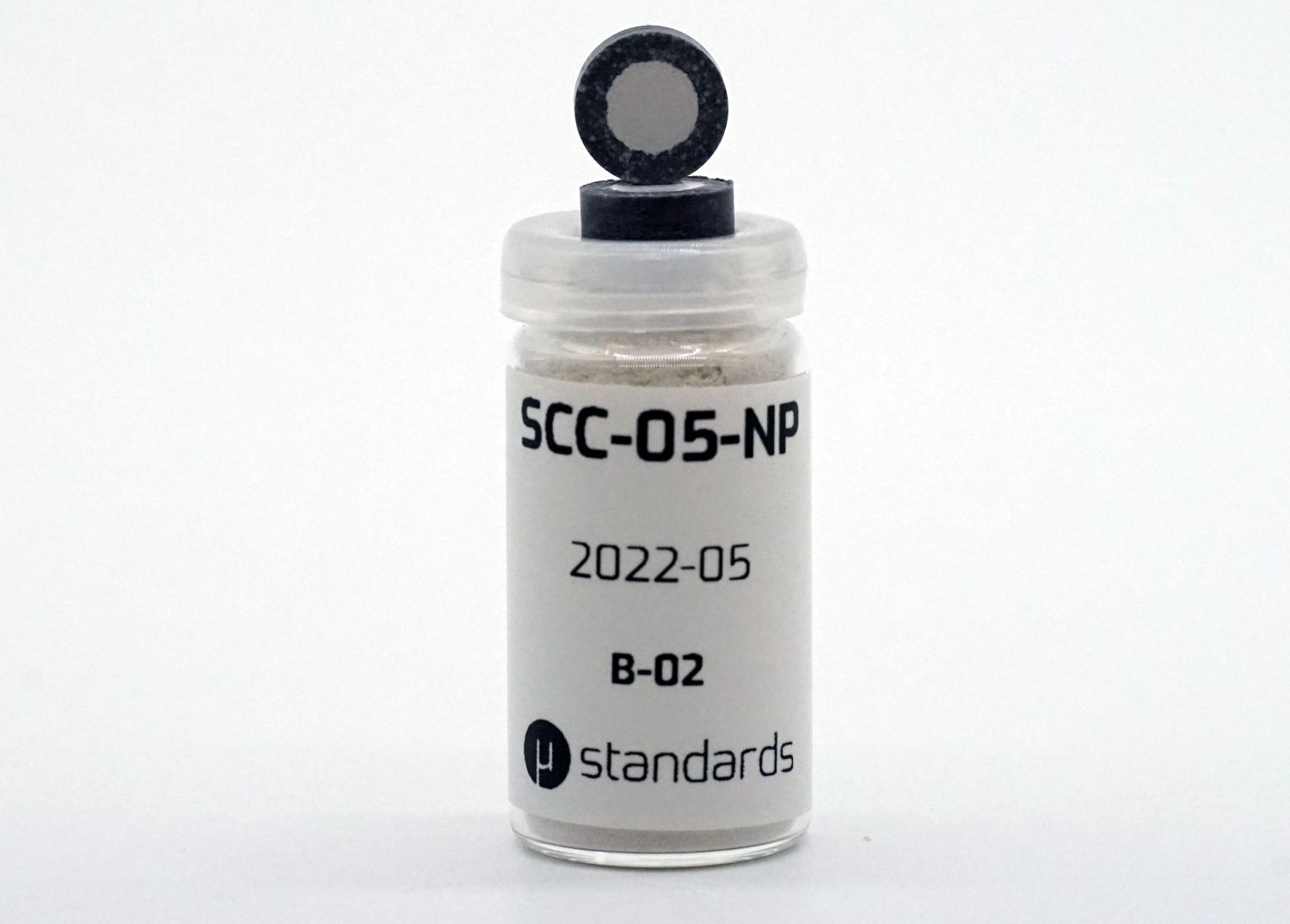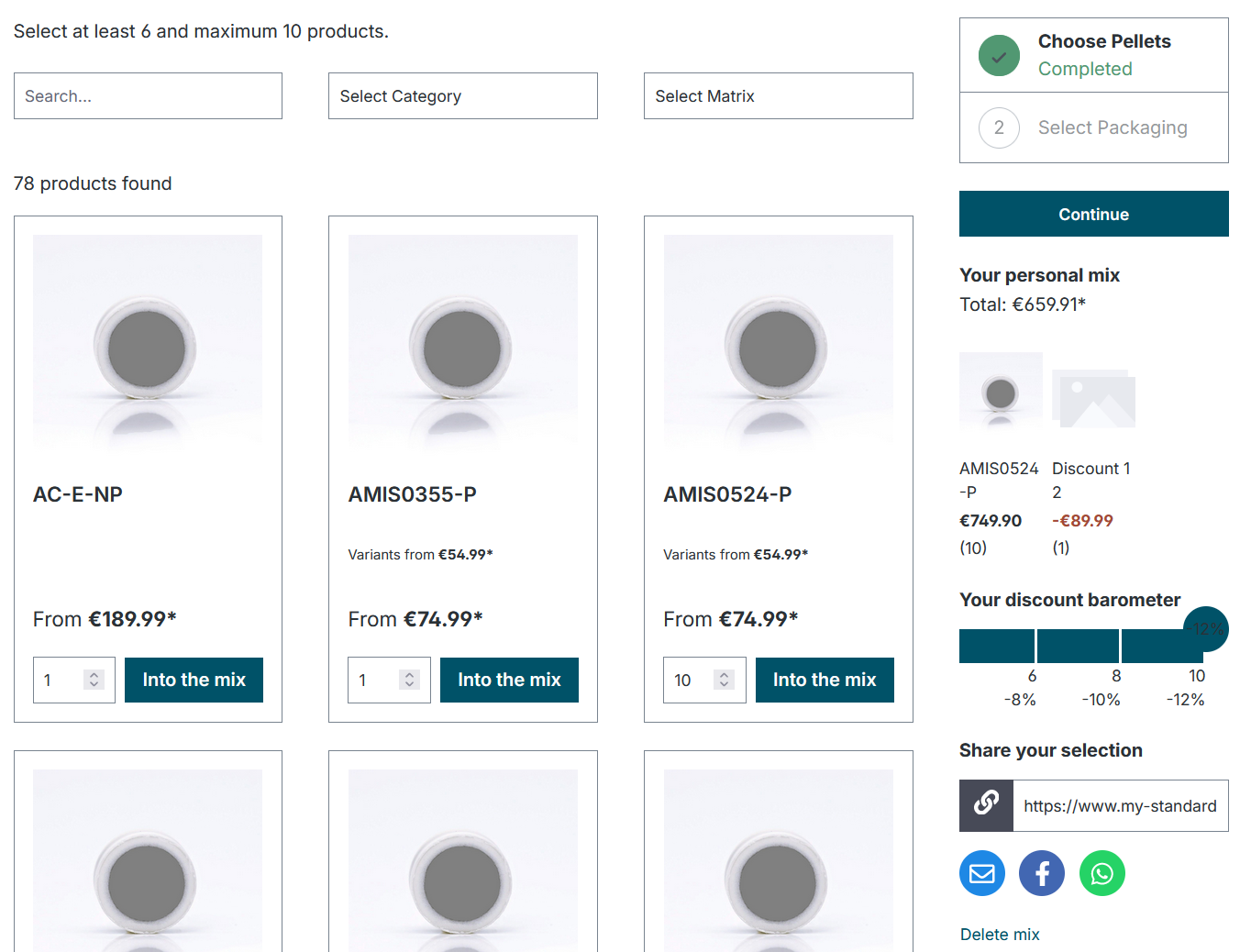Recent research has highlighted the advantages of using multiple carbonate standards to build calibration curves, rather than relying on just one. This approach significantly improves analytical accuracy and robustness in microanalytical workflows.
A recent study from the University of Ghent, titled “LA-ICP-TOF-MS for Quantitative Mapping of Biogenic Carbonate Samples Using Matrix-Matched Nanoparticulate Pressed Powder Pellets”, has been accepted for publication and will soon be available on the JAAS website. The results strongly support the use of multiple standards for enhanced accuracy in carbonate analysis.
👉 An overview of the study results can be found in the presentation below.
At myStandards, we provide two practical options for laboratories aiming to implement this approach:
- Paleoclimate Set small: A 1-inch round, aircraft-grade (7075 alloy) aluminium mount holding three Nano-Pellets:
It contains the Ø 10 mm marine carbonates CRMS-NP (RCM) our synthetic carbonate SCC-05-NP (RCM) as well as the Ø 10 mm terrestrial carbonate SPLT-NP (CRM) enabling researchers to cover both aspects of paleoclimate research. - Paleoclimate Set regular: A geological thin-section shaped mount, also made of aircraft-grade aluminium, holding up to six Nano-Pellets:
Two certified reference materials, the Ø 10 mm marine carbonate BPLM-NP (CRM) and the Ø 10 mm terrestrial carbonate SPLT-NP (CRM).
Also included are four other recharacterized materials, the two marine carbonates NFHS-2-NP (RCM) and CRMS-NP (RCM), the synthetic carbonate SCC-05-NP (RCM) and the limestone ECRM752-1-NP (RCM), allowing researchers to cover both aspects of paleoclimate research.
These flexible setups allow researchers to easily combine multiple standards in a single mount, streamlining calibration procedures. If you like you can also build your own custom set.

Introducing SCC-05-NP: A Next-Generation Carbonate Reference Material
We are proud to announce the release of our latest carbonate Nano-Pellet: SCC-05-NP.
- What it is: A synthetic calcium carbonate Nano-Pellet, developed and produced by myStandards.
- Purpose: Designed for advanced microanalytical techniques such as LA-ICP-MS, LIBS, and µXRF.
- Inspiration: Developed as a modern replacement for the widely used USGS MACS-3 standard, which is no longer available.
Like MACS-3, SCC-05-NP is tailored for quantitative trace element analysis in carbonate materials such as coral, bivalve shells, otoliths, and other skeletal carbonates. However, it introduces several improvements:
- Features elevated and uniform concentrations of key trace elements.
- Provides reliable signal acquisition for naturally low-abundance elements.
How SCC-05-NP Is Made
Our Nano-Pellets are produced through a rigorous process to ensure homogeneity and reproducibility:
- Precipitation from elementally doped solutions of CaCl₂ and Na₂CO₃.
- Washing with ultrapure deionised water (18.2 MΩ).
- Material-specific milling protocol for optimal particle size.
- Freeze-drying and homogenisation.
- Batch-splitting for consistent long-term supply.
The “05” in SCC-05-NP reflects that it is the fifth generation of synthetic carbonate Nano-Pellets, following four earlier R&D prototypes.
A Reliable Successor to MACS-3
With its uniform composition and trace element concentrations, SCC-05-NP is an ideal choice for laboratories previously relying on MACS-3. It offers consistency, availability, and next-generation performance for:
- Calibration
- Quality control
- Trace element analysis in carbonate research
At myStandards, we remain committed to developing high-quality reference materials that enable cutting-edge microanalytical research. With the addition of SCC-05-NP to our carbonate portfolio, we are excited to provide laboratories with reliable tools for advancing their scientific work.
-

Live Webinar Recap
Trust but Verify: A Webinar Recap on Geochemistry and Alloy Analysis On Monday, 23 June 2025, our CEO and founder Simon Nordstad held a live webinar with Evident. In this session, he gave an overview of key analysis techniques, discussed sample preparation, highlighted the importance of reference materials, and shared practical insights into QA/QC protocols.…
-

Our journey to SCC-05-NP
We would like to thank everyone who has accompanied us on our journey to SCC-05-NP so far. We would particularly like to thank the active members of this project. We would like to thank Achim, Andrew, Dany, Dennis, Erin, Fei, Nathan, Tomas and Wim. You are all amazing! It was a long road from the…
-

How to Build Your Custom Pressed Pellet Set for XRF (32 mm)
Looking for the perfect combination of reference materials for your XRF analysis? Our Pick & Mix option gives you the flexibility to create a custom set to meet your specific needs. Follow these four simple steps to create the ideal set for your applications. Step 1: Browse our pellet selection Explore our wide range of…
Proudly powered by WordPress
